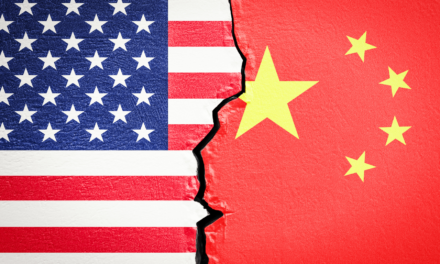by Dorothy Guerrero
In acknowledging the many challenges that it is facing in achieving its development goals and addressing environmental problems, China has embarked on reforms aimed at rebalancing its economy to address its own problems and help in the global effort to abate climate change. Beijing has pledged to take effective initiatives in saving energy, reducing greenhouse gas emissions and switching to an environmentally friendly model of growth believing that this is the only way for it to realize sustainable economic and social development. However, to achieve these targets, the world’s second-biggest economy is also giving support to the green economy, which may not deliver what it wants to accomplish.
China’s 11th Five-Year Development Plan (2006-2010) identified green development as a strategic and long-term reorientation program. This was reaffirmed in the 12th FYP (2011 – 2015) wherein green economy became the most strategic policy theme. In the current plan, environmental protection is highlighted as a “pillar industry”, along with information technology and biotechnology. The Chinese government is expected to invest USD 475 billion over the five-year period to implement its green growth strategy. A decrease in domestic energy consumption per unit of GDP by 16 percent, and carbon dioxide emissions per unit of GDP by 17 percent, from 2010 levels, by 2015 are included in the plan.
In its national submission to the Rio+20 conference, China identified poverty eradication as the country’s primary goal in developing the green economy. The paper further emphasized the right to development as an essential consideration in the formulation and implementation of green economy policies.
Mindful of the necessity to address poverty eradication and economic adjustment for the transition to green economy while faced with the challenge of constrained energy, resources and a degraded environment, China’s People’s Congress set a 7.5 percent growth target in March 2012. This target is lower than the previously safeguarded 8 percent GDP growth (which is often surpassed by the average annual GDP growth from 2006-2010 at 10 percent) in recognition of the costs to China’s economy of environmental degradation. The World Bank estimated the offset to be nearly 6 percent of the country’s total GDP annually. Others estimate that GDP loss could actually be as high as 8 to 12 percent. These losses all but nullify the rapid GDP growth China has seen in the last decade.
In May, reports from China Daily and Xinhua news announced the China State Council’s budget of RMB 26.5 billion (USD 4.2 billion) for financial subsidies to stimulate the consumption of energy-saving products, mainly automobiles and household appliances. Included in the one-year subsidies under the household appliances list are air conditioners, refrigerators and washing machines. It also includes RMB 2.2 billion (USD 347.83 million) to subsidize the use of energy-conserving light bulbs and LEDs. Some RMB 6 billion (USD 948.11 million) will be used to promote the consumption of energy-saving vehicles with engine capacities of 1.6 litres or less, while RMB 1.6 billion (USD 252.90 million) will be allocated to efficient electric motors. These “green” measures aims to expand domestic demand in a bid to provide stable growth.
The above efforts on subsidies, which highlight the national strategy of directing production and consumption of energy-efficient products, although laudable, may not compensate for the immediate and long-term impacts of China’s energy policy and the deeper consequences of the green economy framework that will be finalized in the Rio+20 meetings and beyond. Energy is central to the debate on green economy and as a new economic power, energy underpins China’s entire industrial project of market socialism. Changes in the energy markets are necessary because the burning of fossil fuels is the major cause of global warming yet China’s strategy of where the source of renewable energy will come from and its share in the national energy production plan do not signal such change. If followed with more rigorous and diligent processes, developing a new energy system through the use of renewable energies has the potential to create new relations, productions, exchange and livelihood. However, if the “renewable” energy will still be generated through huge hydropower plant projects, it will still be problematic considering the environmental and social costs of those large-scale projects.
China’s new role as a major source of finance for development projects and market-based climate adaptation approaches in developing countries in the light of the green economy framework will further aggravate the already problematic and complex land-rights and natural resources appropriation issues. Inside China and in many developing countries the equation between growth strategies and environmental protection and social justice remains a huge political and developmental challenge. The whole system of governance and participation mechanisms in the decision making, resource allocation and implementation of development projects is still far from just and sustainable.
While its submission to Rio+20 process adheres to the principle of diversified modes of development that recognizes that countries differ in their development stages and levels as well as national conditions and that there is no one-size-fits-all mode for sustainable development, China has yet to depart from the prevalent unsustainable development paradigm. Despite the arguments by experts and civil society organisations inside China to shift and strengthen production of renewable energy for domestic use, China continues to focus on renewable energy production for export. More than 25 percent of the world’s solar panel supply comes from China. However, 95 percent of the country’s production is for export instead of domestic use in local plants and local buildings.
An 8-page Chinese civil society position paper (see http://www.uncsd2012.org/rio20/content/documents/488Chinese%20Civil%20Society%20Organizations.pdf ) on Rio+20 that came out last November called for the replacement of the current inefficient, unsustainable and inequitable economic model which facilitates a grossly inequitable trading system and fails to eradicate poverty or preserve natural resources. The paper proposed that where the current economy aids inequity, destruction and greed, it should be replaced by an economy that cares for the people and the planet.
By agreeing to green economy as an instrument to achieving sustainable development, China joins the bandwagon of countries that agree with commodification of nature. Critics of the green economy have already identified the risks of treating nature as capital. The appropriation of land and resources to build unsustainable and problematic large-scale projects like hydropower dams, coal plants and other extractive industries that is currently happening in China is negating China’s claim of expanding renewable energy production.
As a key actor in the current multipolar world where decisions and leadership about the global economy, achieving sustainable peace and solving the climate and food crisis are shared by old and new powers, the world needs to see that China can be a different world power. Making a difference means contributing towards changing power relations, this is not just between developed and developing countries, but more importantly in addressing issues of inequality inside one’s country. It also means practicing a different path to development. A continued reliance to dirty coal and destructive hydropower dams reflects the limits of green economy, which is merely calling “green” what is actually brown.
Current economic consensus suggests that the Chinese economy needs to rebalance its shares of net exports, investments, and consumption in GDP and move away from overdependence on investment and exports. Such fundamental rebalancing puts back the question of the contradictions that lie at the heart of the whole low-wage accumulation model that has come to characterize contemporary Chinese capitalism.
China still needs to address the challenge of poverty eradication for 150 million people, building people’s resilience in response to climate change and producing sustainable livelihoods. Green economy — with all its fundamental and deep flaws –will be too limited for such formidable tasks.









